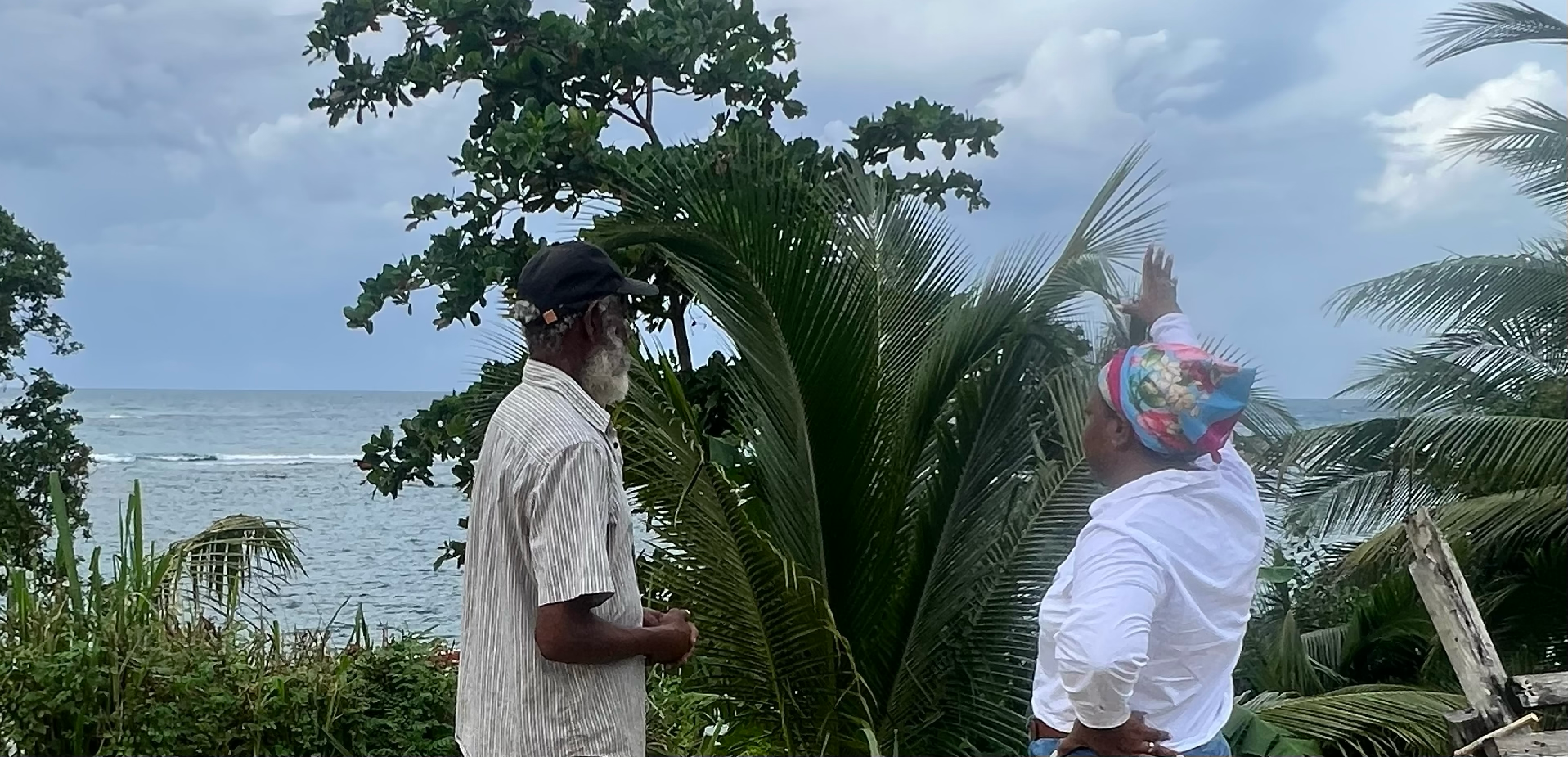

Championing Resilience: St. Ann and St. Mary, Jamaica
November 7, 2024
Dr. Ren-neasha blake gilmore, IIE centennial Fellow 2023-2024
Climate change has increased the vulnerability of Caribbean countries like Jamaica to hurricanes, tropical storms, and heavy rainfall which often leaves communities flooded and lives and livelihoods in danger. These events adversely affect coastal and rural communities, who already have little access to technologies that could provide early warning systems and facilitate post-storm rebuilding.
In her second blog entry of the year, IIE Centennial Fellow Dr. Ren-Neasha Blake Gilmore explores how climate change interacts with inequity and provides an update on her project to develop a coastal resilience and adaptation framework for fisherfolks, youth, and vendors in Jamaica.
The community of Robin’s Bay in St. Mary is grappling with the severe effects of climate change, impacting fisherfolk to small business owners and residents. Rising sea levels and unpredictable weather patterns have disrupted fishing activities, threatening the livelihood of local fisherfolk. Additionally, small businesses are struggling to cope with the increased cost of resources and damages caused by extreme weather, and disruption of fish supplies. Simultaneously residents face heightened risks to their homes, fishing boats, and infrastructure. In a recent visit to the community, we discussed the effects of ocean acidification and rising seas on seafood supply. This threatens not only the food chain in the community but also the availability of fish in neighboring communities.
We must be resilient and stick together.”
– Robin’s Bay coast fisherman
In a discussion with a fisherman along the Robin’s Bay coast, he said, “We must be resilient and stick together,” especially considering the increasing climate risks that plague the coast. Then, after the passage of Hurricane Beryl; a record intensity of so early in the Atlantic Hurricane Season, he further expressed that one of the best things the community can do is unite and help each other. He further went on to highlight the areas of his roof where the heavy winds had damaged.
Robin’s Bay is known as a fishing village and tourist destination. It is the home of fisherfolk, farmers, small business owners, and a subset of residents who traverse to neighboring towns for work. However, my project participants are primarily those who sustain their ‘bread and butter’ within the community. Therefore, educating and training the residents is mission-critical for climate action to yield results. Harry has been around fisherfolk for “all his life” and he understands what it means to be resilient. He is eager to help other fisherfolks in Robin’s Bay to become more resilient.
Hurricane Beryl
After Hurricane Beryl this summer, a local business owner in Robin’s Bay demonstrated resilience by using an electric generator to keep his operations running despite the prolonged power and internet outages. This proactive measure ensured that his business could continue serving the community during a critical time. By adapting quickly, he not only maintained his livelihood but also provided essential services when they were most needed.
Key Observations
- Residents are now more aware of the effects of climate change, recognizing the urgent need to address these challenges.
- They are ramping up their actions to be more resilient, working together collaboratively to implement strategies and solutions that strengthen their community against future disasters.
- My project is well-received and is also complemented by the support of public officials who educate residents on the effects of climate change and resilience strategies.
“It could be worse. A few zincs came off the roof that I am now replacing, and still no power, but we are grateful.”
Progress
So far, my project has been successful in achieving its goal by providing education, training, and the sharing of new ideas. Workshops on climate adaptation techniques, such as sustainable farming practices and flood-resistant construction, have equipped residents with practical knowledge to protect their livelihoods and properties. Training sessions on emergency preparedness and resource management have fostered a sense of collaboration and self-reliance. Through these initiatives, the project has empowered the community to proactively address daily climate threats and build a more resilient future.
Sustaining Resilience Initiatives
One of the key goals of this project is to help community members sustain the resilience initiatives they have already started. For example, local fisherfolk have begun using more durable, storm-resistant equipment, while small business owners have invested in backup power sources like generators. Additionally, residents have organized community emergency response teams (using messaging) and established grassroots communication networks to stay connected during crises. By supporting these ongoing efforts, my project aims to ensure that these strategies become ingrained in the community’s daily practices.

My project has reaped the most progress so far in Fisherman’s Point, Ocho Rios. This is primarily because the population is larger than the two other project communities.
Robin’s Bay Fisherfolk travel outside the community to sell their supplies so they are harder to reach; hence, this portion had a slow start.
The lowest participation thus far has been at Paggee Beach. Similar to Robin’s Bay, fisherfolks venture out and thus, are hard to reach. The retention rate here is also the lowest among the three communities.
Named in honor of IIE’s Centennial and association with the Fulbright Program, the IIE Centennial Fellowship seeks to help enhance Fulbright as a life-long experience and recognize alumni whose work embodies the program’s underlining values of mutual understanding, leadership, global problem solving, and global impact.